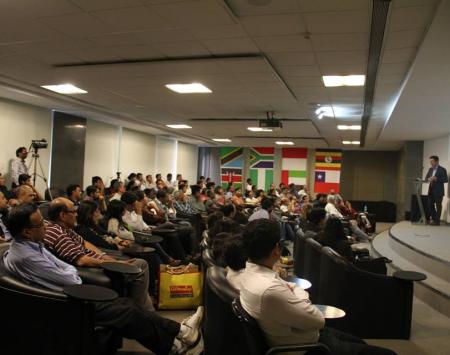About the Lecture
In recent years the public debate on corruption and the Lokpal Bill has increasingly focused on what public opinion holds to be mounting misdeeds and criminal conduct of a whole class of elected politicians. This focus has obscured the deeper historical roots of corruption in India, and the wider systemic links between how democracy, social aspiration and governance actually works in most of the country. In this lecture Dr. Hansen argued, firstly, that corruption was written into the very fabric of colonial rule and the bureaucratic culture of the modern Indian state. Secondly, drawing on many years of ethnographic field work in various parts of India, he painted a series of portraits of people who have made it their full time to enable and prey on public services in poorer neighborhoods; to mobilize and deliver votes to political parties; to trade in information, knowledge and contacts needed by municipal workers, police officers, NGOs, builders and many others. These are the millions of men (and some women) who form the elementary building blocks of popular political life and governance in India, in its best and its worst sense. Any discussion of corruption in India must begin by asking: what conditions have made it possible and necessary for these people and their expertise tothrive and make themselves indispensible?
About Dr. Thomas Blom Hansen
Thomas Blom Hansen is the Reliance-Dhirubhai Ambani Professor of Anthropology and South Asian Studies at Stanford University. He is also the founder-director of the Center for South Asia at Stanford. Much of Professor Hansen’s fieldwork was done during the tumultuous and tense years in the beginning of the 1990s when conflicts between Hindu militants and Muslims defined national agendas and produced frequent violent clashes in the streets. Out of this work came two books: The Saffron Wave: Democracy and Hindu Nationalism in Modern India (Princeton 1999) which explores the larger phenomenon of Hindu nationalism in the light of the dynamics of India’s democratic experience, and Wages of Violence: Naming and Identity in Postcolonial Bombay (Princeton 2001) which explores the historical processes and contemporary conflicts that led to the rise of violent socioreligious conflict and the renaming of the city in 1995. His long-term study of religious revivalism and identity politics in an Indian township in South Africa was recently published in the book Melancholia of Freedom: Social Life in an Indian Township in South Africa. (Princeton 2012). More recently, he has started a study of community institutions, economic development and everyday legal culture in the city of Aurangabad.



